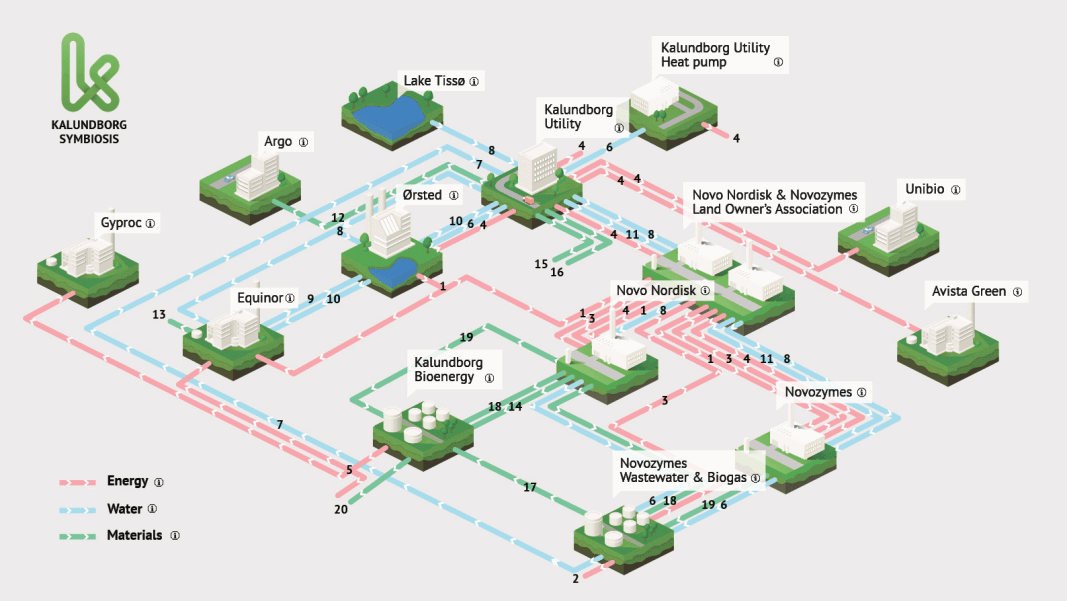Top: Graphic courtesy of Kalundborg Symbiosis
A new law in Washington State (SB 5345) will help create industrial symbiosis networks that provide collaborative opportunities where the underutilized resources of one company, such as waste, byproducts, energy, water, logistics, capacity, expertise, equipment, and materials may be used as a resource by another. SB 5345 became law in May, with support from the Center for Sustainable Infrastructure (CSI) based in Olympia (WA). “Embracing industrial symbiosis in Washington — especially on a completely bipartisan basis — represents much more than a new state program,” CSI Director of Strategic Initiatives Ted Sturdevant explains. “It represents a step away from the age-old ‘or’ approach to economic development, where policies choose which values win at the expense of others. SB 5345 is a big step towards the ‘and’ approach, where our investments and policies are built to advance the interests that matter to all of us: good jobs and a healthy environment and strong communities.”
To help educate lawmakers about the opportunities provided by industrial symbiosis (IS), CSI organized tours in 2017, 2018, and 2019 of Kalundborg, Denmark, where the concept of IS was born. Kalundborg evolved over three decades into a network of over a dozen major facilities capturing and reusing waste resources. Today, this city of only 17,000 residents generates $28 million in annual economic value, saves nearly a billion gallons of water annually, and cuts climate pollution by over 600,000 tons a year, according to CSI.
The new law, to be administered by the Washington State Department of Commerce, establishes a statewide industrial waste coordination program to provide expertise, technical assistance, and best practices to support local IS projects. A competitive IS grant program will provide grants for the research, development, and deployment of local waste coordination projects.
The coordination program, states the law, “must facilitate waste exchange” by taking actions that include:
- Developing inventories of industrial waste innovation currently in operation
- Generating a material flow data collection system to capture and manage data on resource availability and potential synergies
- Establishing guidance and best practices for emerging local industrial resource hubs
- Identifying access to capital to fund projects, including federal, state, local, and private funding
- Developing economic and environmental performance metrics to measure the results of industrial or commercial hubs
- Hosting workshops and connecting regional businesses, governments, utilities, research institutions, and other organizations in order to identify opportunities for resource collaboration
- Assisting entities throughout the entire life cycle of IS projects, from identification of opportunities to full project implementation
- Developing economic cluster initiatives in order to spur growth and innovation













